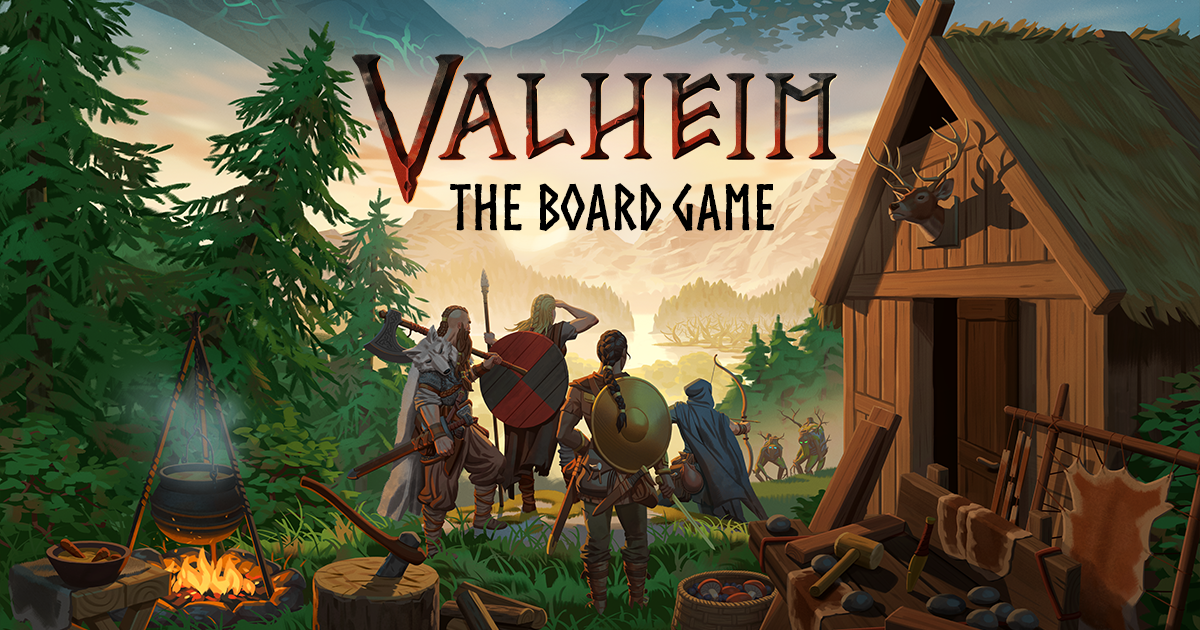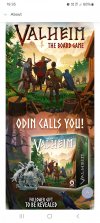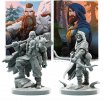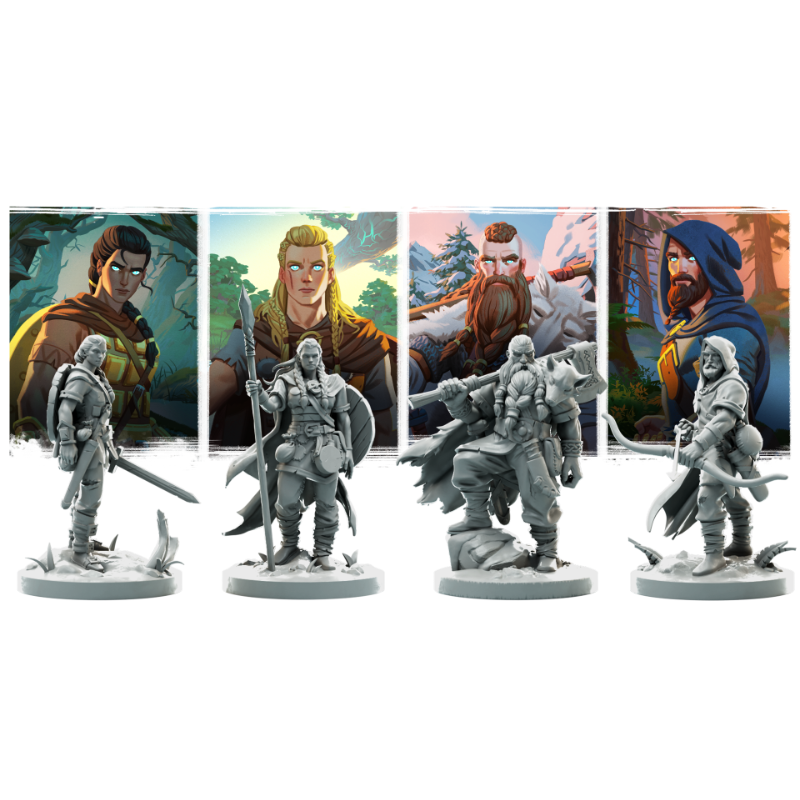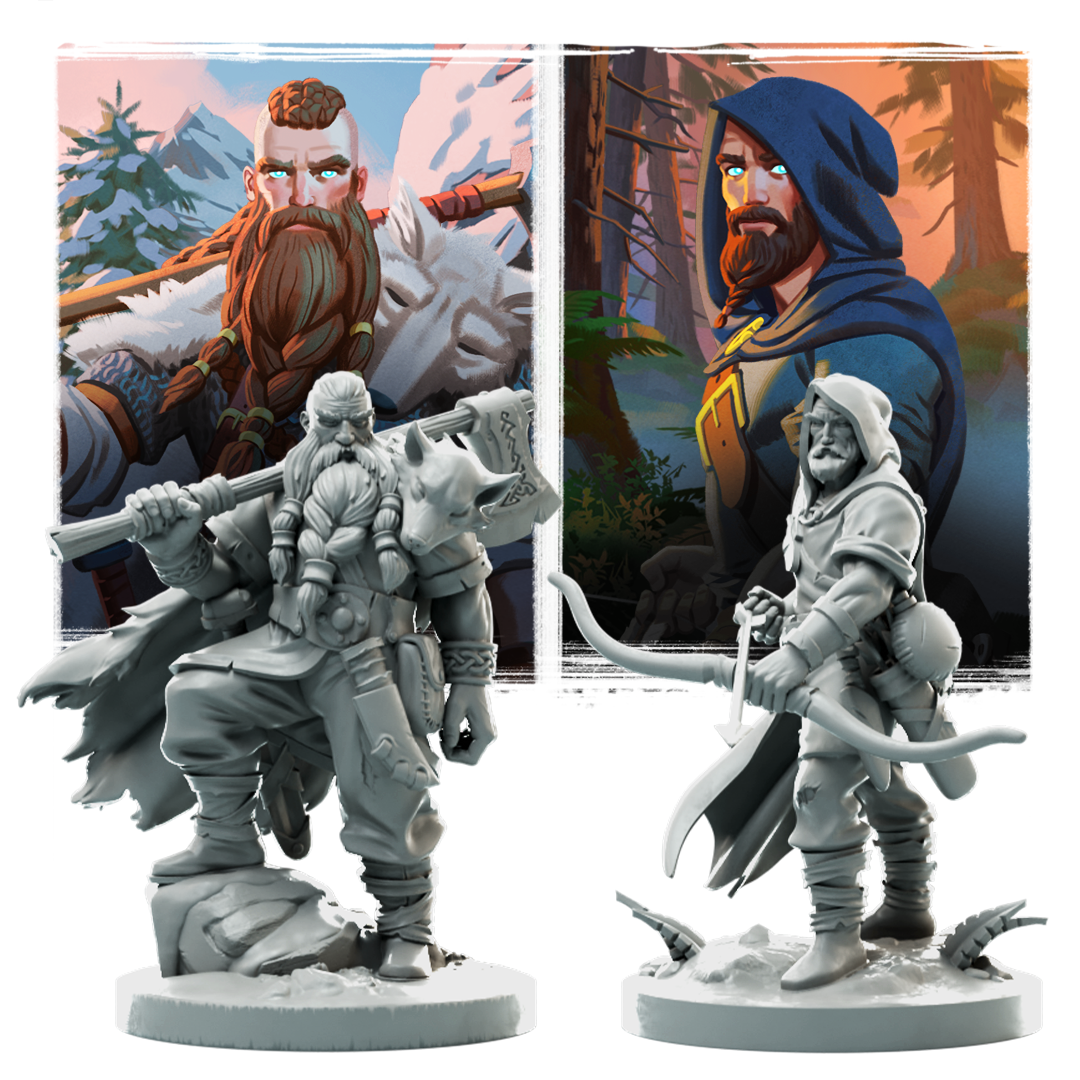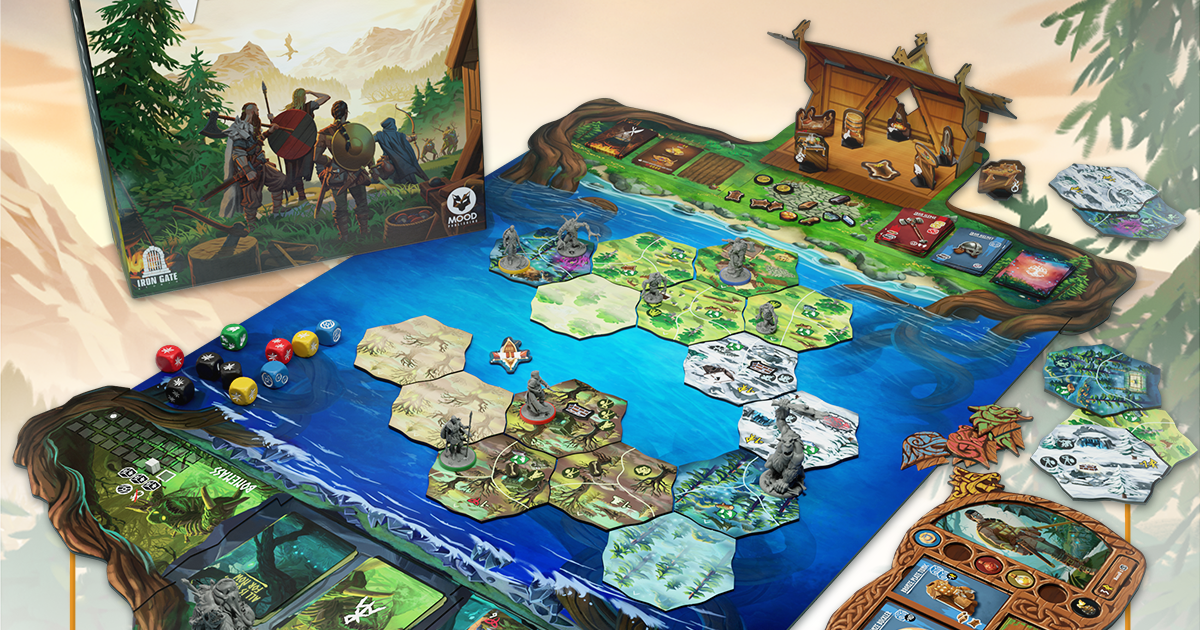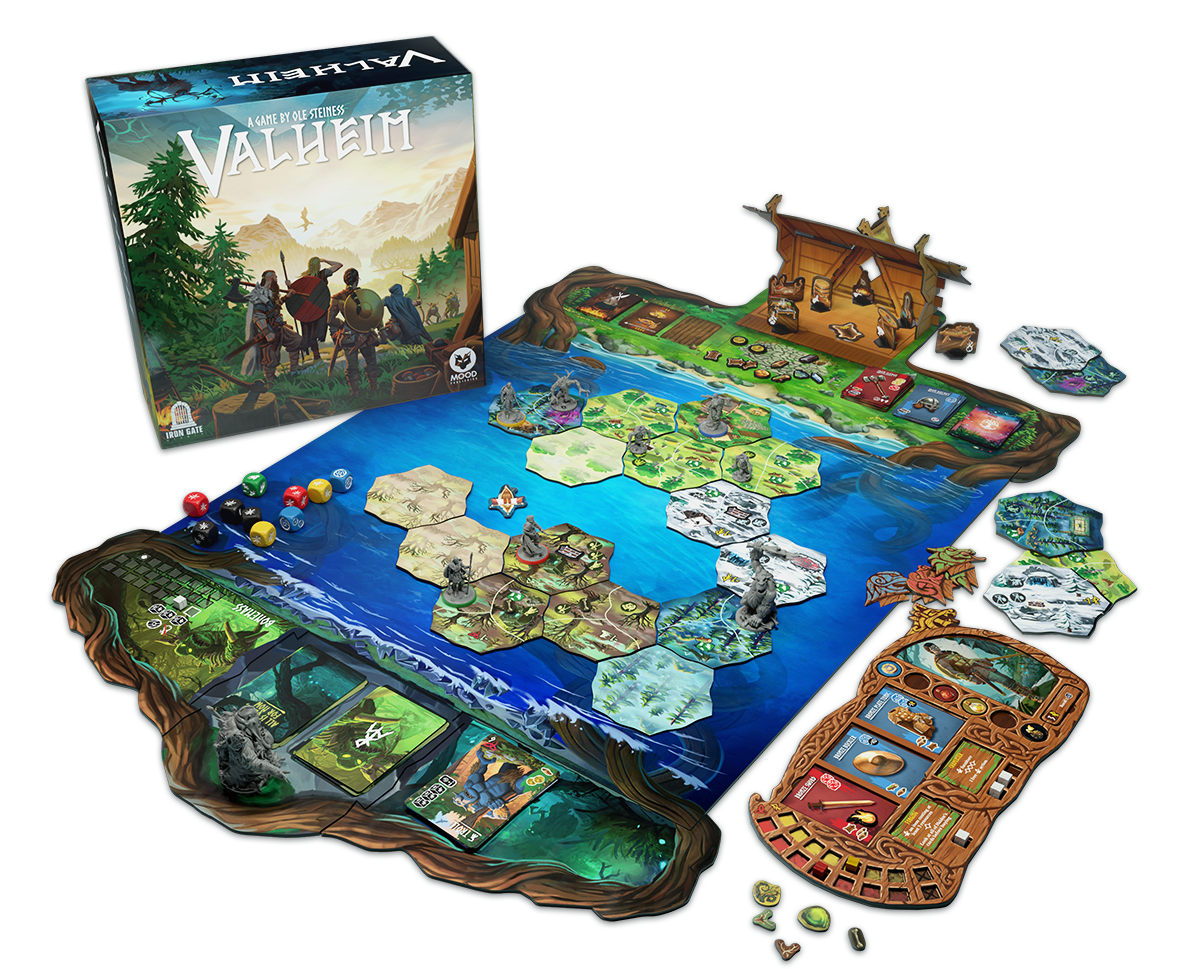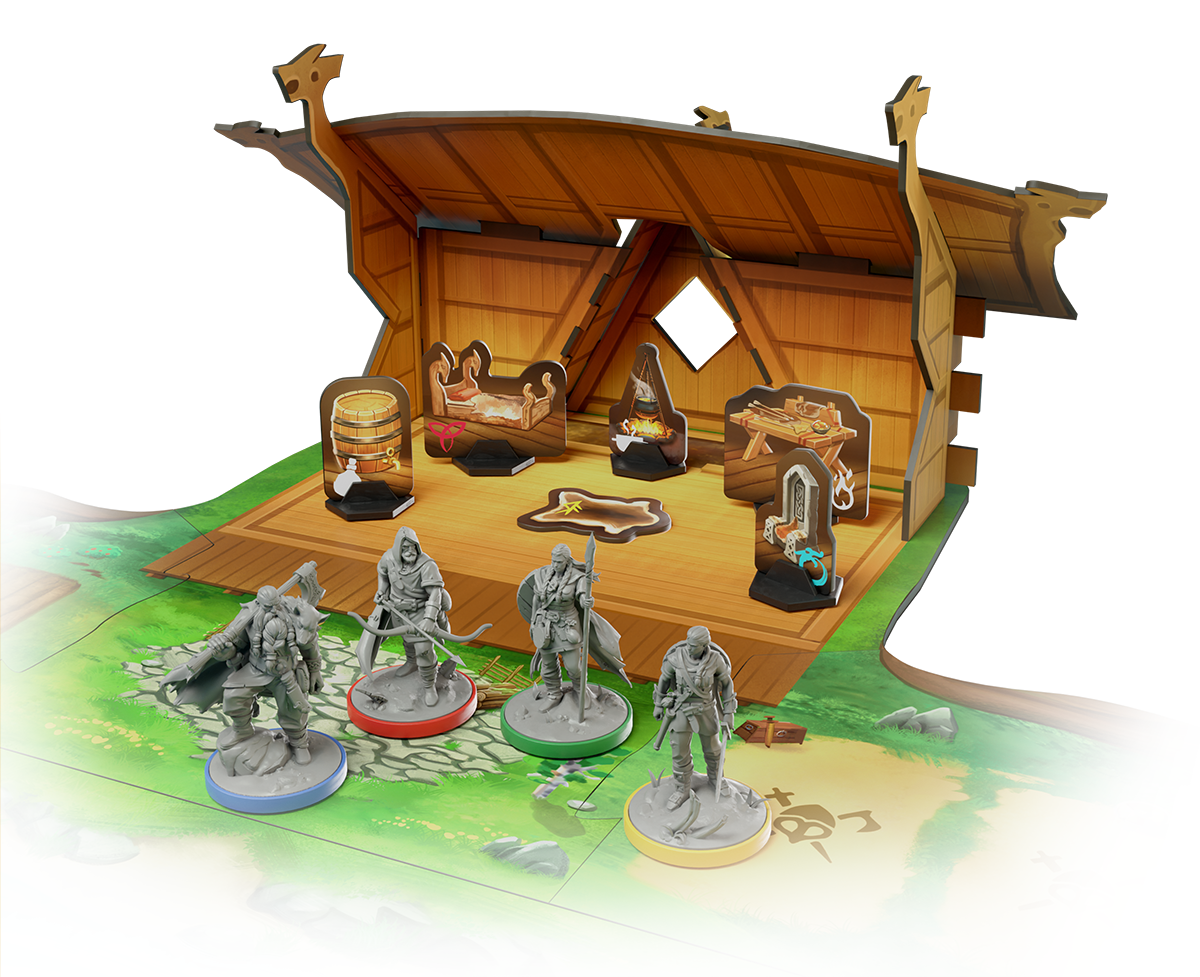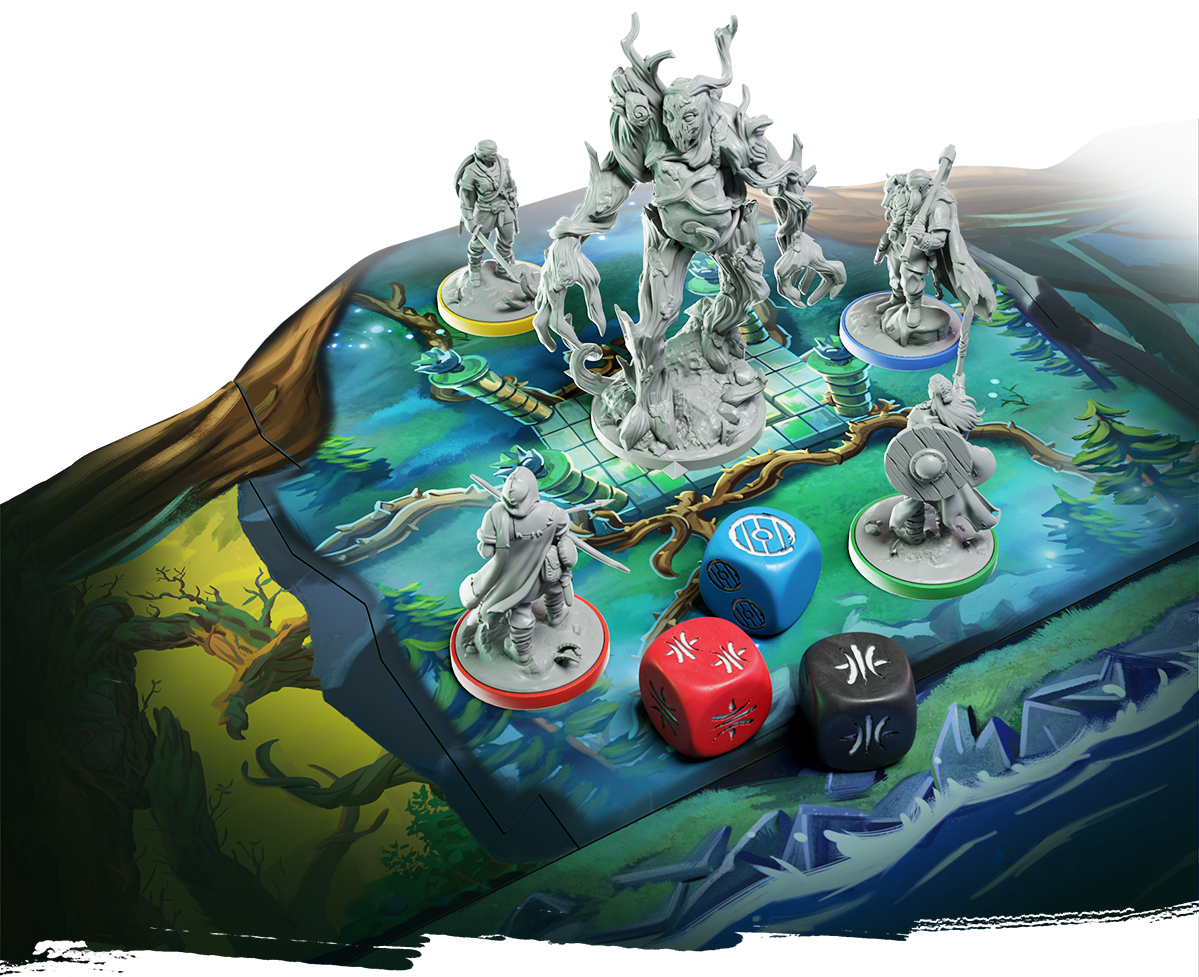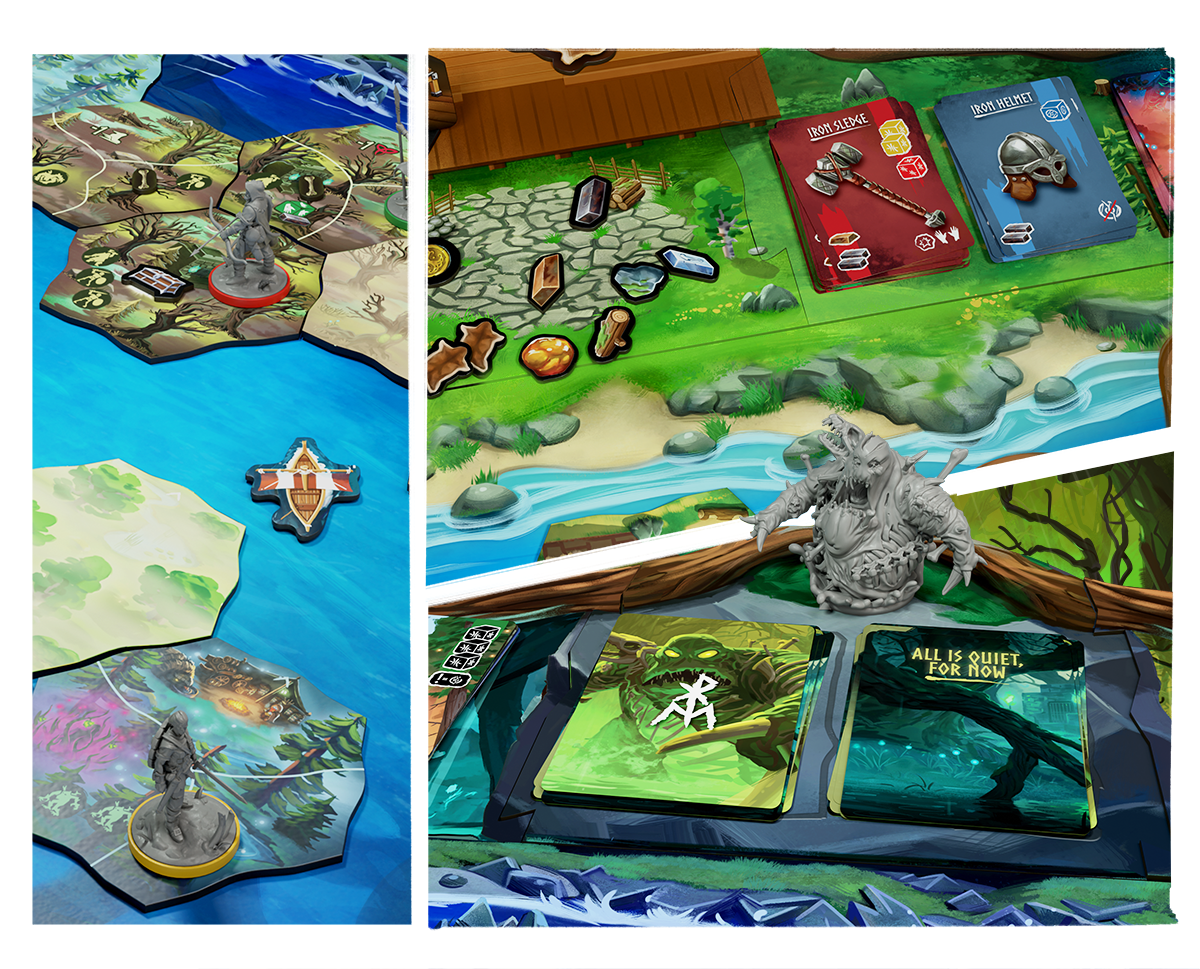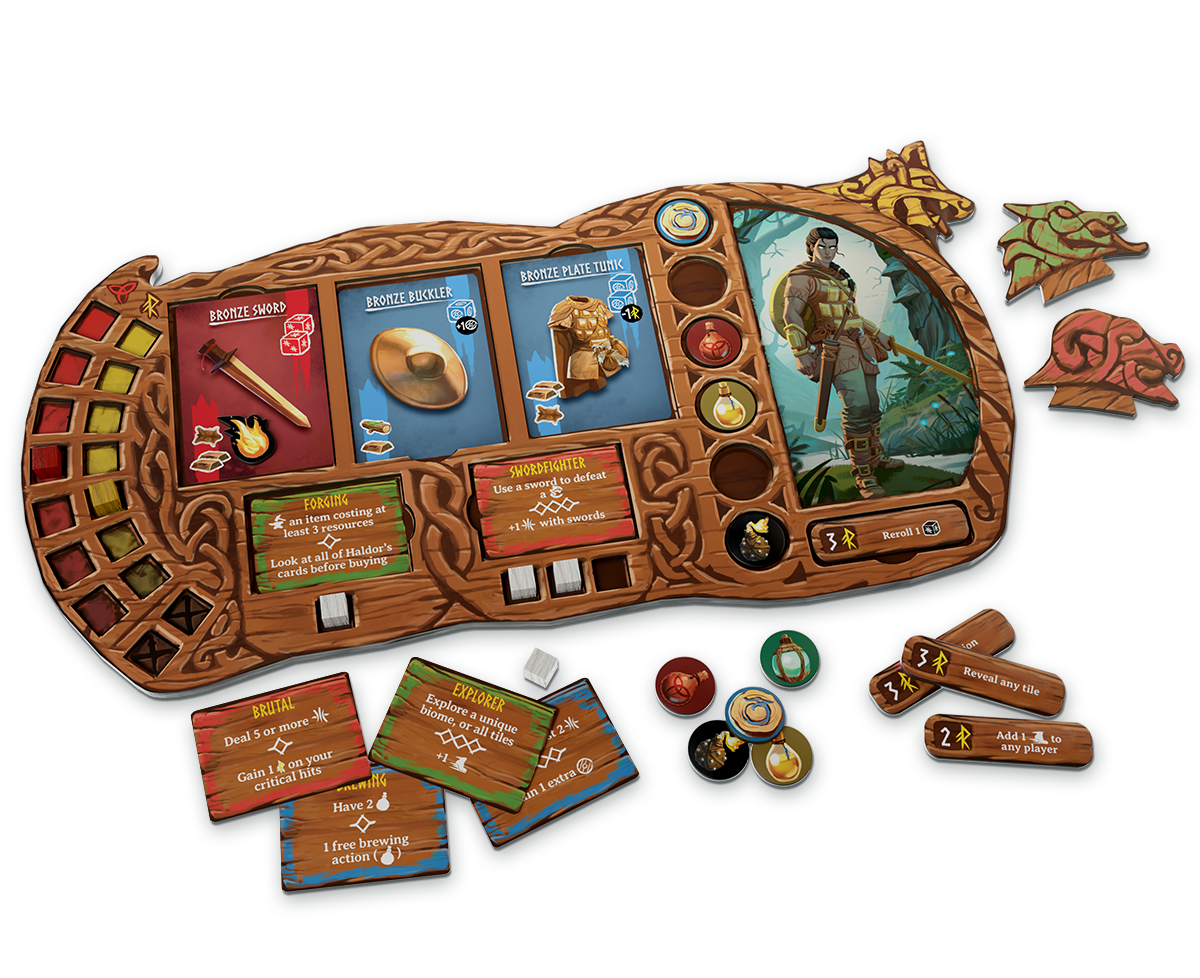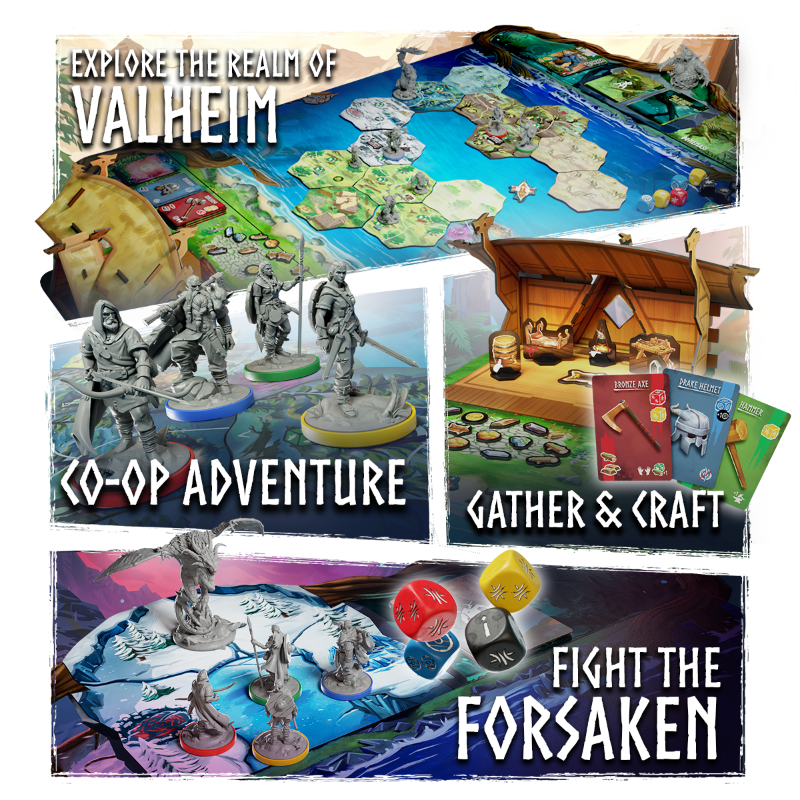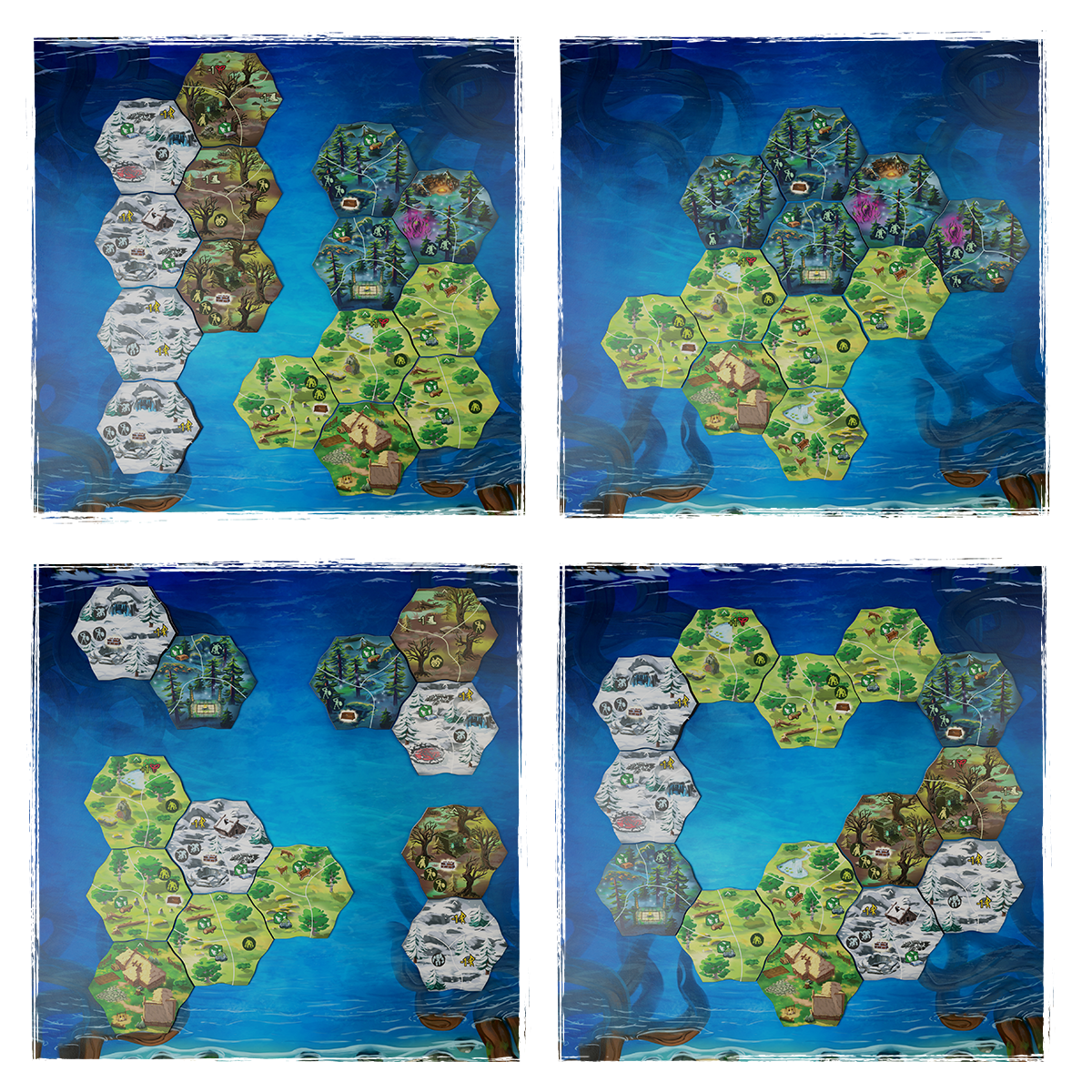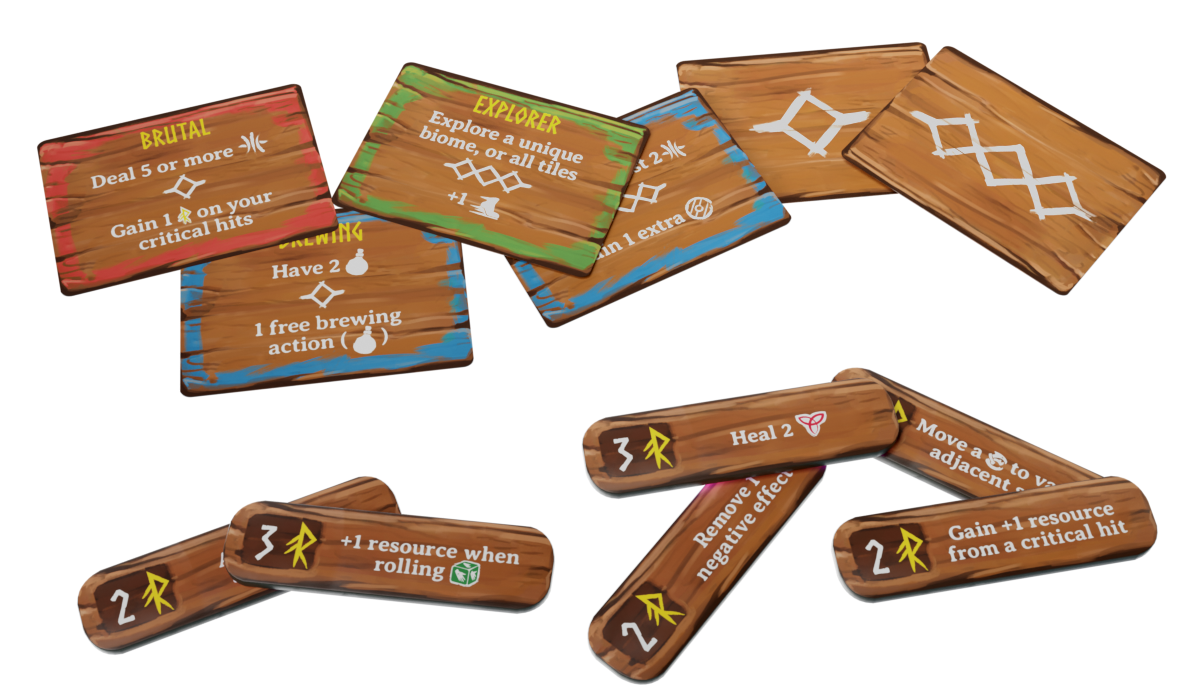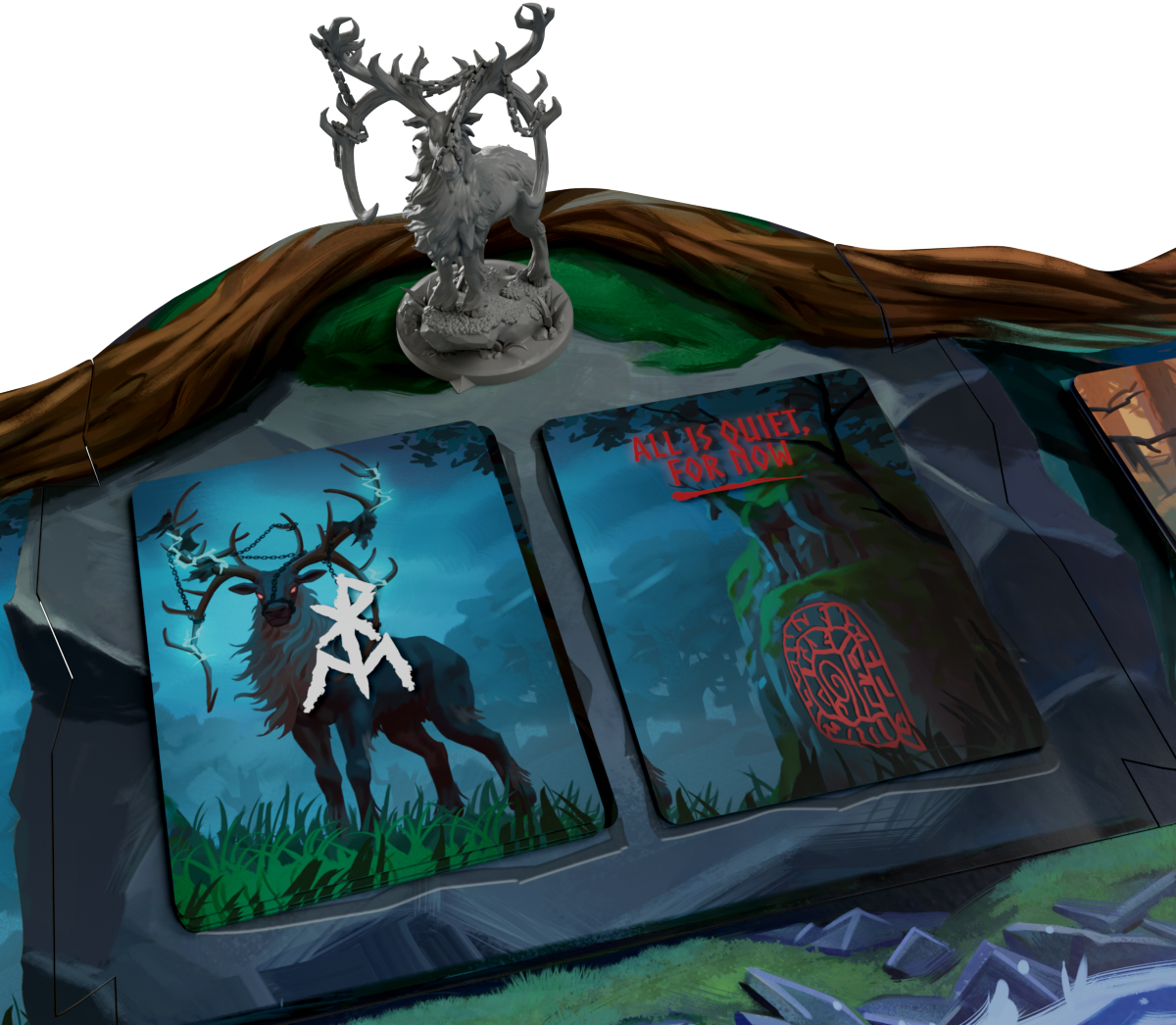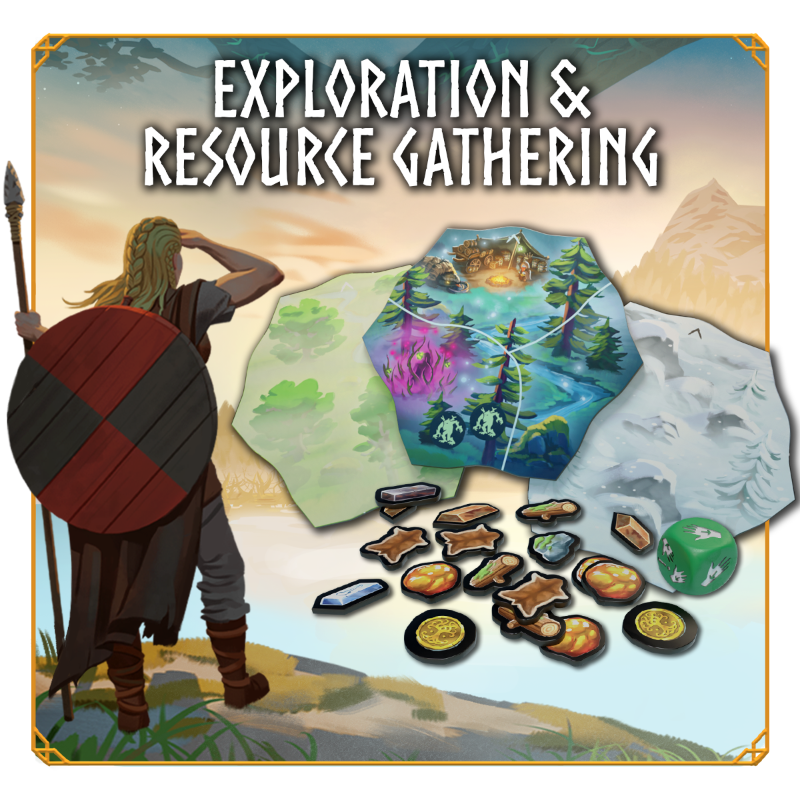AGGIORNAMENTO #3
16/08/2024 15:58
Deep Dive: Setup and Objectives - Pre-Campaign Update #2
Dive into a breakdown of how to play the game with a focus on setting up missions, customizing your warrior, and how to take a turn. Finally, get a glimpse of what is currently happening at MOOD Publishing right now.
Keep talking; we’re listening!
Berserkers and shieldmaidens, we’re excited to be back with another big update on Valheim: The Board Game.
We want to start by extending a massive “thumbs up” to you, our fans and followers. We’re working tirelessly to make Valheim a thrilling and intricate experience, and your feedback is invaluable. We read all comments and consider all suggestions, so keep them coming!
Since our last update, we’ve seen a massive surge in comments and discussions and are approaching the
20K follower milestone. That’s more than we could ever imagine. You probably already told your friends, partners, and pets, so thank you again for your support.
Sidenote: we’re also running a monthly newsletter for our community where we do giveaways, news, updates and community highlights. Most importantly, we don’t spam. You’ll find the signup here:
https://mailchi.mp/moodpublishing.com/newsletter.
Finally, a special shoutout to @Mazin and @Maced for keeping the conversation rolling and keeping MC busy! We’re huge fans.
Now, let’s dive into the cool stuff…
Missions, objectives, and maps
In the last update, we introduced the core gameplay loop of Valheim: The Board Game. Your objective is to summon and defeat the Forsaken, but you will need to prepare before facing the challenge. To get ready, you’ll need to gather materials and craft gear, upgrade your house, and defend yourself against creatures while doing so.
Before jumping into the action, you must choose a mission scenario and set up the game. This is the focus of the first part of this update.
Remember, all aspects of the game can still be subject to change.
Mission Scenarios
Every session of Valheim is featured around a unique mission. Each features a map layout, a story introduction, a mission objective, and a few guidelines. To summon the Forsaken and progress to the endgame, you will need to complete the objective. If you fail to do so, you lose.
You’ll have the option to play “campaign mode,” where you progress through a series of scenarios, or to design your own scenarios. But for now, let’s focus on how missions work.
Map Layout
Each mission has an image showing you exactly how to assemble the game board. Each mission map layout is unique and indicates where to place the home tile and what biome tiles go where – follow the guide closely, or you might not be able to complete the objectives! Some missions require you to place specific tiles in specific spots, but you’ll shuffle and select most tiles randomly. As with the game, the biomes are progressively tougher, so make sure to be prepared for the challenges ahead.
Examples of game board layouts with all tiles revealed. At the beginning of a game, all tiles except the home tile will be concealed.
Story and mission objectives
Each mission will feature a short description that sets the stage for what’s to come. We are, after all, in the mystic lands of Valheim, so a dash of fantasy is fitting. Make sure to read it; there might be hints on how to approach the challenge!
The mission objective is what really matters. This will explain what you need to do beforehand and how and where to summon the boss. Here’s an example:
- Collect two Stag Trophies and bring them to Eikthyr’s altar in the meadows. When you are at the altar, you can take an action to summon Eikthyr, triggering the boss fight.
Creating your Warrior
Not everyone is called upon by Odin to cleanse Valheim from evil. Odin’s Valkyries only select the fiercest warriors for this noble and challenging task. You might start your journey unarmed and wearing rugged leather scraps, but you bring your experience from Midgard’s battlefields.
Before starting a game of Valheim, you’ll be setting up your player board. The board consists of health and stamina trackers, three equipment slots, six consumable slots, spaces for minor and major upgradeable skills, and a slot for your unique stamina skill. Let’s have a look at these specific elements.
A player board with health and stamina trackers, upgrade skills, a stamina skill, and space for equipment and consumables.
Health and stamina
You will be starting your game with full health and four stamina points that you can spend on specific actions and stamina skills. If you run out of health, you are knocked unconscious, and if you run out of stamina, you can’t use some actions. Both health and stamina are primarily recovered by consuming meads or feasting at home.
Equipment and consumables
At the start of the game, you don’t have any equipment or consumables – you’ll have to craft them. Most equipment requires resources to craft, while most consumables require specific furniture. We will go into detail on these in the next deep dive.
Customization
You pick your warrior’s expertise and skills at the beginning of the game. We recommend you pick them randomly in your first sessions, but as you become more experienced, you can select them to create powerful combinations.
Examples of minor and major upgrade skills, the back of the cards, and a few examples of stamina skills.
Upgrade Skills
There are two tiers of upgrade skills, and you’ll pick one of each. The minor upgrade will require you to execute a specific action objective to activate, while the major will require you to execute an action objective thrice. Once you have completed the objective, the upgrade will be active for the rest of the session, boosting a specific action.
Stamina Skills
The All-father imbues you with godly powers to help you succeed in your mission. Like the upgrade skills, you select a stamina skill at the beginning of the game. These unique skills are always available, allowing you to do special actions. They don't require action points, but cost a significant amount of stamina and can be cast on yourself or any of your fellow Vikings, no matter where they are.
With the player board set up, you’re ready to embark on the journey through Valheim and face the challenges ahead. Now, let’s look at what actions you can do to work your way towards the final showdown.
Progressing towards the Endgame
To prepare for the big showdown, you must craft tools, weapons, and armor. Some equipment is cheap and can help you progress faster by boosting specific actions, while others are expensive but effective against mighty foes.
You’ll also need to return to the house to upgrade it with furniture, granting boosts, new crafting options, and stronger actions. These will help you face the challenges ahead and recover from brutal showdowns, so don’t forget them!
It is up to you to figure out what combinations work well and how to spend your resources, but remember to be prepared for the final challenge because once you summon the Forsaken and trigger the boss fight, there is no turning back – it’s glory or defeat.
Taking Turn
As per usual, players take turns in clockwise order. Each player can perform three actions unless stated otherwise. After a player has taken his actions, an event phase occurs, where everything can happen. After the player puts the event into effect, the turn moves on to the next player. Let’s look at a typical turn of Valheim: The Board Game.
Player Actions
During each round, each player has to decide how to use his three actions. These can be used for traversing, exploring new tiles, collecting resources, attacking, trading, crafting, cooking, eating and so on. Remember, that your upgrade skills, equipment, or furniture might boost some actions. Some minor actions, such as taking consumables or dismantling gear, can be executed for free during your turn.
Obstacles
Most actions require or are affected by specific circumstances. You will encounter terrain that is challenging to move through or have creatures inhabiting them, preventing you from moving through them. Some actions must be executed at home, while others require you or your teammates to have created something beforehand. Make sure to familiarize yourself with the requirements before executing the actions.
Event Cards
After you have taken your turn and before you pass the turn to the next player, you must draw an event card. These cards come in four decks, each connected to one of the four Forsaken. The mission defines the event deck at play.
Eikthyr’s boss event board with the corresponding event deck, a flipped event card, and the super cool Eikthyr miniature.
An event card has to be resolved immediately. These events can be raids, modifiers that affect specific actions, repopulation of creatures on particular tiles, or if you are lucky, nothing. Once the event is resolved, the card is discarded unless stated otherwise. After you have resolved the event card, you pass the turn to the next player.
These event decks also act as your timer, so keep an eye on it. If you run out of cards to pick up and haven’t progressed to the final boss challenge or completed the objectives, you lose the game.
That’s the details about Valheim: The Board Game we bring you today. In the next deep dive, we’ll take you through collecting resources, crafting equipment and consumables, and upgrading your house, so keep an eye out for it.
Final Notes
You guys have been asking, so before we say farewell, we want to give you a glimpse of what is happening at MOOD Publishing right now.
We are currently all hands on deck, working hard to make Valheim as great as possible and running playtests to ensure every aspect is thought trough. Our artists are polishing every game element, and you can imagine how long it takes to draw every plank of the house or every straw of grass in the Eikthyr boss arena.
We hope you enjoyed a more detailed insight into Valheim: The Board Game and are as excited as we are about the next. As always, feel free to reach out if you have any questions - we’ll do our best to answer them.
See you in the comment section!
The MOOD Publishing Team
0